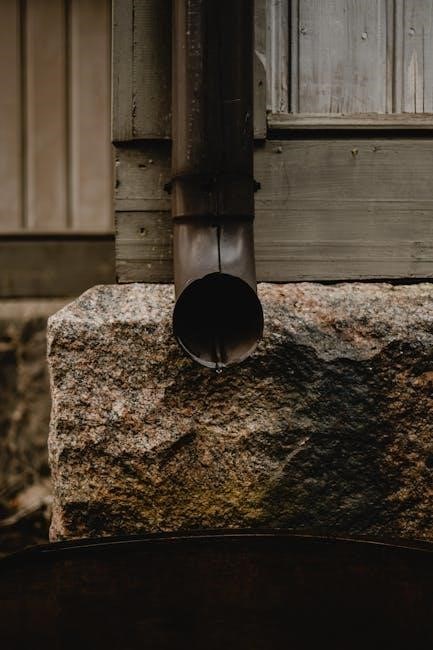The PleurX Drainage System is a minimally invasive solution for managing pleural effusion and malignant ascites, enabling safe and effective fluid drainage at home, improving patient comfort and reducing hospital stays․
1․1 Overview of the PleurX Catheter System
The PleurX Catheter System is a medical device designed for the drainage of excess fluid from the pleural or abdominal cavity, commonly used to manage conditions like pleural effusion or malignant ascites․ It consists of a tunneled catheter, a collection bottle, and a vacuum system to facilitate fluid removal․ The system is designed for home use, allowing patients to drain fluid independently, reducing the need for frequent hospital visits․ The catheter is inserted under the skin and connected to a vacuum bottle, enabling safe and efficient drainage․ The system includes a one-way valve to prevent air entry and features a tunneled design to minimize the risk of infection or dislodgement, providing a reliable solution for chronic fluid management․
1․2 Indications for Use
The PleurX Catheter System is primarily indicated for the drainage of recurrent or chronic pleural effusion and malignant ascites․ It is designed to alleviate symptoms such as shortness of breath and abdominal discomfort caused by excess fluid accumulation․ The system is suitable for patients requiring long-term fluid management and can be used for both pleural and abdominal drainage․ Its tunneled catheter design minimizes the risk of infection and ensures secure placement․ The PleurX system is ideal for patients who require frequent drainage and prefer to manage their condition at home․ It is not intended for acute fluid drainage or for patients with certain contraindications, such as known allergies to latex or severe coagulopathy․ Always follow medical guidance for specific use cases․
1․3 Benefits of Home Drainage with PleurX
Home drainage with the PleurX system offers significant benefits, including reduced hospital stays and improved quality of life․ Patients can manage fluid accumulation comfortably at home, minimizing the need for frequent medical visits․ The system is designed for ease of use, allowing patients or caregivers to perform drainage independently․ It reduces discomfort caused by fluid buildup, such as shortness of breath or abdominal pressure․ Additionally, home drainage decreases the risk of complications associated with prolonged hospitalization․ The PleurX system is portable and discreet, enabling patients to maintain their daily activities․ Overall, it empowers patients to take control of their condition, enhancing both convenience and confidence․
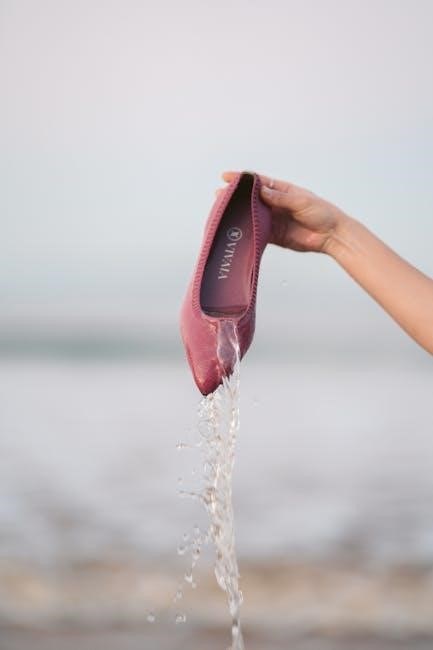
Preparing for PleurX Drainage
Prepare by gathering necessary supplies, ensuring proper hand hygiene, and setting up a clean drainage area to facilitate a smooth and safe procedure․
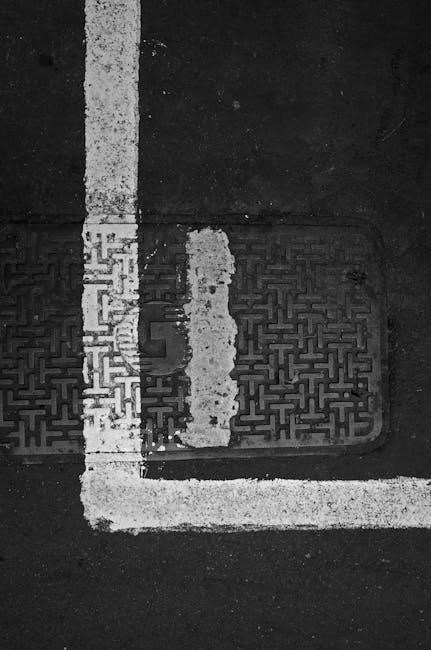
2․1 Gathering Necessary Supplies
To ensure a smooth drainage process, gather all required supplies in advance․ These include the PleurX Drainage Kit, antiseptic solution, sterile gloves, gauze pads, and a clean dressing․ Additionally, have a trash bag and a measuring cup ready for proper disposal and fluid measurement․ Organize the supplies in a clean, accessible area to avoid delays․ Always refer to the manufacturer’s guidelines or your healthcare provider’s instructions for a comprehensive list of materials․ Proper preparation helps maintain sterility and reduces the risk of complications during the procedure․ Ensure all items are within reach before starting the drainage process․
2․2 Hand Hygiene and Infection Control
Proper hand hygiene is crucial to prevent infections during the PleurX drainage process․ Wash your hands thoroughly with soap and water for at least 20 seconds before starting․ Use antibacterial soap and ensure hands are completely dry․ Wearing sterile gloves is essential to minimize the risk of introducing bacteria․ Clean the catheter site with antiseptic solution as instructed by your healthcare provider․ Maintain a clean environment by using a sterile drape or clean towel under the catheter site․ Avoid touching the catheter or surrounding area unnecessarily․ Following these steps helps prevent infections and ensures a safe drainage process․ Always prioritize hygiene to protect your health․
2․3 Preparing the Drainage Area
To ensure a safe and effective drainage process, prepare the area thoroughly․ Gather all necessary supplies, including the PleurX drainage kit, antiseptic solution, sterile gloves, and a clean, flat surface․ Place a sterile drape or clean towel under the catheter site to catch any spills․ Position the drainage kit within easy reach to avoid movement during the procedure․ Ensure good lighting to clearly see the catheter and surrounding area․ Remove any clothing or bedding that may obstruct access․ Have a biohazard container ready for proper disposal of used supplies․ A well-prepared environment minimizes complications and ensures a smooth drainage experience․

Step-by-Step Drainage Procedure
The PleurX drainage procedure involves connecting the drainage kit, removing the old dressing, cleaning the catheter site, inserting the access tip, releasing the clamp, and monitoring fluid flow․
3․1 Connecting the Drainage Kit
To connect the drainage kit, ensure all supplies are ready․ Insert the access tip into the catheter valve, ensuring a secure fit․ Attach the drainage line to the vacuum bottle, aligning the connectors properly․ Use the slide clamp to halt fluid flow temporarily․ Verify the vacuum indicator turns green, confirming the system is ready․ Check for air leaks by gently squeezing the tubing․ Once connected, release the clamp slowly to allow fluid drainage․ Always follow the manufacturer’s instructions and adhere to the recommended drainage limits to avoid complications․ Proper connection ensures safe and effective fluid removal․
3․2 Removing the Old Dressing
Begin by gathering essential supplies, including gloves and antiseptic wipes․ Put on disposable gloves to maintain sterility․ Gently peel the edges of the old dressing, working carefully to avoid pulling the catheter․ If the dressing adheres, moisten it with saline solution to ease removal․ Once the dressing is removed, inspect the catheter site for signs of infection or irritation․ Discard the old dressing in a biohazard bag․ Ensure the area is clean before proceeding to the next steps․ Avoid touching the catheter insertion site to minimize infection risk․ Proper removal ensures a clean environment for the new dressing and maintains catheter integrity․
3․3 Cleaning the Catheter Site
Clean the catheter site using antiseptic wipes or chlorhexidine solution to reduce infection risk․ Gently scrub the area in a circular motion, working outward from the catheter insertion point․ Ensure the site is free from dirt, crust, or drainage․ Allow the area to air dry completely before applying a new dressing․ Inspect the site for redness, swelling, or pus, which may indicate infection․ Proper cleaning is essential to maintain catheter patency and prevent complications․ Always use sterile gloves and follow infection control guidelines during this process to ensure a clean environment for the catheter site․
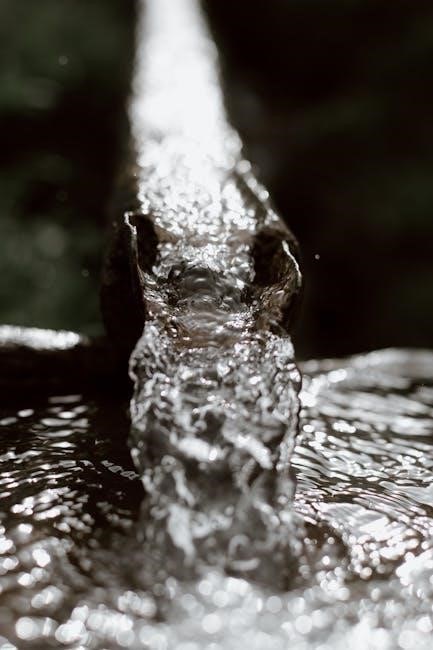
3․4 Inserting the Access Tip
Insert the access tip into the catheter valve, ensuring it aligns properly․ Gently push the tip until it clicks, securing it in place․ Avoid forcing the tip, as this could damage the catheter․ Once connected, the system is ready for drainage․ After insertion, release the clamp on the drainage line to allow fluid to flow into the collection bottle․ Monitor the flow to ensure it progresses smoothly․ If resistance is felt, do not force the tip, as this may cause complications․ Proper insertion ensures effective drainage and minimizes the risk of catheter damage or infection․
3․5 Releasing the Clamp on the Drainage Line
Once the access tip is securely inserted, locate the clamp on the drainage line and release it by sliding it upward․ This action allows fluid to flow freely into the collection bottle․ Ensure the clamp is fully open to enable proper drainage․ Monitor the flow of fluid to confirm it is draining smoothly․ If the fluid flow is slow or stops, check for kinks in the tubing or blockages․ Always adhere to the recommended drainage limits (1,000 mL for pleural effusion and 2,000 mL for ascites) to avoid complications․ Stop drainage immediately if you experience discomfort or suspect an issue․
3․6 Monitoring Fluid Drainage
After releasing the clamp, closely monitor the fluid drainage process to ensure it flows smoothly and safely․ Check for any kinks or blockages in the tubing that might obstruct the flow․ Observe the collection bottle to track the amount of fluid drained and avoid exceeding the recommended limits (1,000 mL for pleural effusion and 2,000 mL for ascites)․ If fluid flow slows or stops, inspect the catheter and tubing for potential issues․ Be vigilant for signs of complications, such as sudden pain, shortness of breath, or air leaks․ Stop drainage immediately if any unusual symptoms occur and consult your healthcare provider․ Always follow the guidelines provided in the PleurX instructions for safe and effective drainage․
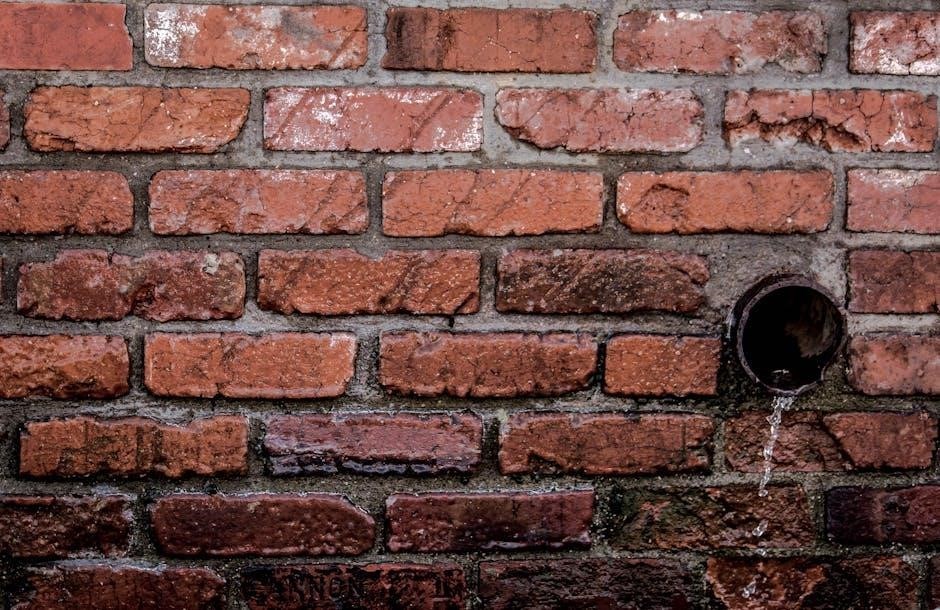
Dressing and Catheter Care
Secure the catheter with dressing, ensuring airtight sealing to prevent infection and promote healing․ Maintain site hygiene and monitor for signs of complications like infection or allergic reactions․
4;1 Applying a New Dressing
After cleaning the catheter site, apply a new, sterile dressing to cover the insertion area․ Ensure the dressing is snug and sealed to prevent air leaks and infection․ Use antimicrobial ointment around the site if prescribed․ Secure the catheter with a dressing change kit or sterile gauze, and tape it firmly to prevent dislodgment․ Always maintain asepsis during dressing changes to reduce infection risks․ Dispose of the old dressing properly and wash hands before and after the procedure․ Follow your healthcare provider’s specific instructions for dressing application to ensure optimal care and catheter longevity․ Regular dressing changes are crucial for maintaining hygiene and preventing complications․
4․2 Securing the Catheter
Securing the catheter is crucial to prevent dislodgment and ensure proper function․ Use medical tape or a dressing change kit to firmly attach the catheter to the skin․ Loop the catheter and secure it with sterile gauze or a transparent dressing․ Ensure the catheter is not kinked or twisted, as this could obstruct fluid flow․ Regularly inspect the catheter’s position to confirm it remains in place․ If the catheter feels loose or unstable, contact your healthcare provider immediately․ Proper securing helps maintain catheter integrity, reduces the risk of complications, and ensures safe, effective drainage․ Always follow your provider’s instructions for securing the catheter to minimize risks and promote healing․ Regular checks are essential for long-term catheter stability and functionality․
4․3 Maintaining Catheter Site Hygiene
Maintaining catheter site hygiene is vital to prevent infections․ Wash hands thoroughly with soap and water before touching the catheter or site․ Clean the area around the catheter using an antiseptic solution, such as chlorhexidine, during dressing changes․ Gently swab the catheter insertion site in a circular motion, ensuring no residue remains․ Allow the area to air dry before applying a new sterile dressing․ Inspect the site daily for signs of redness, swelling, or drainage, which may indicate infection․ If any unusual symptoms appear, contact your healthcare provider immediately․ Proper hygiene practices help safeguard against complications and ensure the catheter remains functional for effective drainage․ Regular cleansing and monitoring are essential for maintaining catheter site health and preventing infections․ Consistent hygiene routines are key to a successful home drainage experience with the PleurX system․ Adhering to these steps minimizes the risk of infection, ensuring the catheter remains safe and effective for fluid drainage․ Always follow the specific hygiene instructions provided by your healthcare team to maintain optimal catheter care․ Proper hygiene is a cornerstone of successful catheter management and patient safety․ By prioritizing cleanliness and vigilance, you can protect your health and ensure the longevity of the catheter․ Remember, infection prevention is a critical component of your overall care plan when using the PleurX system at home․ Regular cleansing and inspection are simple yet effective measures to maintain catheter site hygiene and prevent complications․ Stay proactive in monitoring your catheter site and report any concerns promptly to your healthcare provider․ This proactive approach ensures the catheter remains a safe and reliable solution for managing fluid accumulation․ Always adhere to the recommended hygiene protocols to protect your health and maintain the integrity of the catheter․ Proper catheter care is essential for a positive outcome when using the PleurX system for home drainage․ By following these hygiene steps, you can significantly reduce the risk of infection and enjoy the benefits of home-based fluid management․ Catheter site hygiene is a shared responsibility between you and your healthcare team, ensuring safe and effective drainage․ Stay committed to maintaining a clean and dry environment around the catheter to support your overall well-being․ Proper hygiene practices are fundamental to the successful use of the PleurX system, enabling you to manage your condition confidently and effectively at home․ Always prioritize cleanliness to safeguard your health and the functionality of the catheter․ Regular cleansing and monitoring are essential for preventing infections and ensuring the catheter remains in optimal condition․ By following these hygiene guidelines, you can maintain the health of your catheter site and continue to benefit from the PleurX system․ Catheter care is a critical aspect of your treatment plan, and proper hygiene plays a central role in its success․ Stay vigilant and proactive in maintaining a clean catheter site to protect your health and ensure effective drainage․ Proper hygiene practices are a cornerstone of catheter management, enabling you to safely and effectively manage fluid drainage at home․ Always follow the recommended hygiene steps to maintain the integrity of your catheter and prevent complications․ By prioritizing catheter site hygiene, you can enjoy the full benefits of the PleurX system while minimizing the risk of infection․ Regular cleansing and inspection are simple yet effective measures to ensure the catheter remains safe and functional․ Stay proactive in your catheter care and maintain a clean environment around the site to support your health and well-being․ Proper hygiene is essential for the successful use of the PleurX system, enabling you to manage your condition confidently and effectively at home․ Always adhere to the recommended hygiene protocols to protect your health and ensure the longevity of the catheter․ By following these guidelines, you can maintain the health of your catheter site and continue to benefit from the PleurX system․ Catheter site hygiene is a critical component of your care plan, and proper practices are essential for preventing infections and ensuring effective drainage․ Stay committed to maintaining a clean and dry environment around the catheter to support your overall well-being․ Proper hygiene is fundamental to the successful use of the PleurX system, enabling you to manage your condition safely and effectively at home․ Always prioritize cleanliness to safeguard your health and the functionality of the catheter․ Regular cleansing and monitoring are essential for preventing infections and ensuring the catheter remains in optimal condition․ By following these hygiene guidelines, you can maintain the health of your catheter site and continue to benefit from the PleurX system․ Catheter care is a critical aspect of your treatment plan, and proper hygiene plays a central role in its success․ Stay vigilant and proactive in maintaining a clean catheter site to protect your health and ensure effective drainage․ Proper hygiene practices are a cornerstone of catheter management, enabling you to safely and effectively manage fluid drainage at home․ Always follow the recommended hygiene steps to maintain the integrity of your catheter and prevent complications․ By prioritizing catheter site hygiene, you can enjoy the full benefits of the PleurX system while minimizing the risk of infection․ Regular cleansing and inspection are simple yet effective measures to ensure the catheter remains safe and functional․ Stay proactive in your catheter care and maintain a clean environment around the site to support your health and well-being․ Proper hygiene is essential for the successful use of the PleurX system, enabling you to manage your condition confidently and effectively at home․ Always adhere to the recommended hygiene protocols to protect your health and ensure the longevity of the catheter․ By following these guidelines, you can maintain the health of your catheter site and continue to benefit from the PleurX system․ Catheter site hygiene is a critical component of your care plan, and proper practices are essential for preventing infections and ensuring effective drainage․ Stay committed to maintaining a clean and dry environment around the catheter to support your overall well-being․ Proper hygiene is fundamental to the successful use of the PleurX system, enabling you to manage your condition safely and effectively at home․ Always prioritize cleanliness to safeguard your health and the functionality of the catheter․ Regular cleansing and monitoring are essential for preventing infections and ensuring the catheter remains in optimal condition․ By following these hygiene guidelines, you can maintain the health of your catheter site and continue to benefit from the PleurX system․ Catheter care is a critical aspect of your treatment plan, and proper hygiene plays a central role in its success․ Stay vigilant and proactive in maintaining a clean catheter site to protect your health and ensure effective drainage․ Proper hygiene practices are a cornerstone of catheter management, enabling you to safely and effectively manage fluid drainage at home․ Always follow the recommended hygiene steps to maintain the integrity of your catheter and prevent complications․ By prioritizing catheter site hygiene, you can enjoy the full benefits of the PleurX system while minimizing the risk of infection․ Regular cleansing and inspection are simple yet effective measures to ensure the catheter remains safe and functional․ Stay proactive in your catheter care and maintain a clean environment around the site to support your health and well-being․ Proper hygiene is essential for the successful use of the PleurX system, enabling you to manage your condition confidently and effectively at home․ Always adhere to the recommended hygiene protocols to protect your health and ensure the longevity of the catheter․ By following these guidelines, you can maintain the health of your catheter site and continue to benefit from the PleurX system․ Catheter site hygiene is a critical component of your care plan, and proper practices are essential for preventing infections and ensuring effective drainage․ Stay committed to maintaining a clean and dry environment around the catheter to support your overall well-being․ Proper hygiene is fundamental to the successful use of the PleurX system, enabling you to manage your condition safely and effectively at home․ Always prioritize cleanliness to safeguard your health and the functionality of the catheter․ Regular cleansing and monitoring are essential for preventing infections and ensuring the catheter remains in optimal condition․ By following these hygiene guidelines, you can maintain the health of your catheter site and continue to benefit from the PleurX system․ Catheter care is a critical aspect of your treatment plan, and proper hygiene plays a central role in its success․ Stay vigilant and proactive in maintaining a clean catheter site to protect your health and ensure effective drainage․ Proper hygiene practices are a cornerstone of catheter management, enabling you to safely and effectively manage fluid drainage at home․ Always follow the recommended hygiene steps to maintain the integrity of your catheter and prevent complications․ By prioritizing catheter site hygiene, you can enjoy the full benefits of the PleurX system while minimizing the risk of infection․ Regular cleansing and inspection are simple yet effective measures to ensure the catheter remains safe and functional․ Stay proactive in your catheter care and maintain a clean environment around the site to support your health and well-being․ Proper hygiene is essential for the successful use of the PleurX system, enabling you to manage your condition confidently and effectively at home․ Always adhere to the recommended hygiene protocols to protect your health and ensure the longevity of the catheter․ By following these guidelines, you can maintain the health of your catheter site and continue to benefit from the PleurX system․ Catheter site hygiene is a critical component of your care plan, and proper practices are essential for preventing infections and ensuring effective drainage․ Stay committed to maintaining a clean and dry environment around the catheter to support your overall well-being․ Proper hygiene is fundamental to the successful use of the PleurX system, enabling you to manage your condition safely and effectively at home․ Always prioritize cleanliness to safeguard your health and the functionality of the catheter․ Regular cleansing and monitoring are essential for preventing infections and ensuring the catheter remains in optimal condition․ By following these hygiene guidelines, you can maintain the health of your catheter site and continue to benefit from the PleurX system․ Catheter care is a critical aspect of your treatment plan, and proper hygiene plays a central role in its success․ Stay vigilant and proactive in maintaining a clean catheter site to protect your health and ensure effective drainage․ Proper hygiene practices are a cornerstone of catheter management, enabling you to safely and effectively manage fluid drainage at home
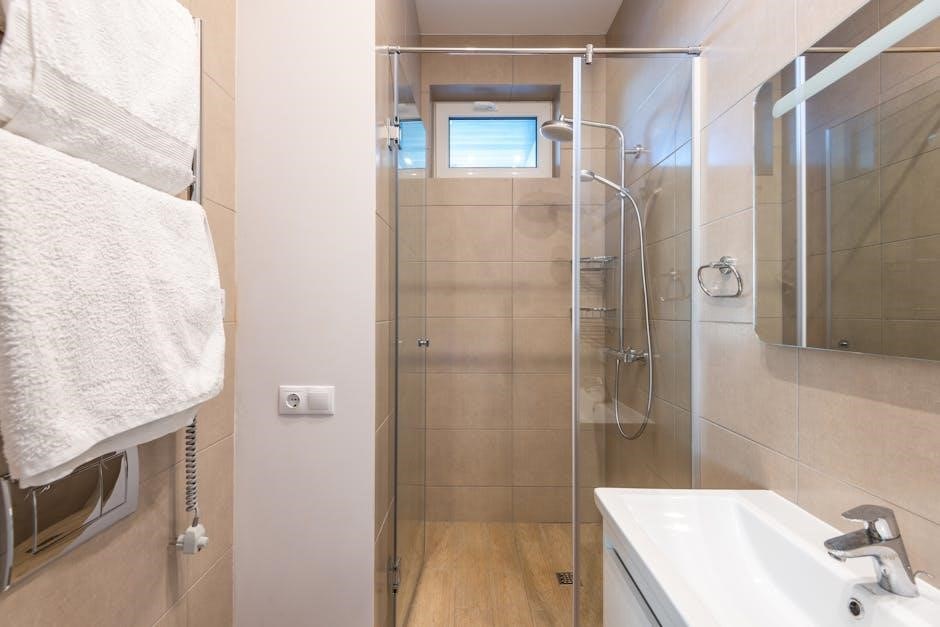
Troubleshooting Common Issues
Address blockages, air leaks, or catheter dislodgement promptly to ensure proper drainage and prevent complications․ Refer to specific guidelines for resolving these issues effectively and safely;
5․1 Dealing with Blockages
If a blockage occurs, stop drainage immediately․ Check for visible obstructions in the catheter or tubing․ Gently flush the catheter with sterile saline solution as directed by your healthcare provider․ Avoid using force, as this may cause damage․ If the blockage persists, contact your doctor for assistance․ Regular maintenance and proper hygiene can help prevent blockages․ Always follow the manufacturer’s guidelines for flushing and caring for the catheter to ensure optimal functionality and minimize complications․
5․2 Managing Air Leaks
An air leak in the PleurX system can occur due to improper connections or catheter damage․ If an air leak is suspected, inspect the catheter and tubing for visible defects․ Ensure all connections are secure and tighten any loose fittings․ If the leak persists, clamp the catheter temporarily and consult your healthcare provider․ Minor leaks may be resolved with additional sealing, but significant leaks require professional intervention․ Regular inspection and proper handling of the catheter can help prevent air leaks․ Always follow the manufacturer’s guidelines for maintaining the integrity of the system to ensure safe and effective drainage․
5․3 Addressing Dislodgement
If the PleurX catheter becomes dislodged, stop the drainage process immediately to prevent complications․ Gently secure the catheter to prevent further movement and cover the site with a sterile dressing․ Contact your healthcare provider promptly for professional reinsertion or removal․ To avoid dislodgement, ensure the catheter is properly secured with dressing and tape, and avoid pulling or applying direct pressure on the catheter site․ Regular checks can help identify early signs of dislodgement, such as catheter migration or leakage․ Always follow proper care and handling techniques to maintain catheter stability and ensure safe, effective drainage․ Seek medical assistance if dislodgement occurs to prevent infection or other complications․

Safety Precautions and Warnings
Always follow safety guidelines to prevent complications․ Avoid draining more than 1000mL from the chest or 2000mL from the abdomen at one time․ Be cautious of re-expansion pulmonary edema and allergic reactions to latex components․ Monitor for signs of infection and ensure proper hygiene during drainage․ Stop immediately if discomfort or complications arise and consult your healthcare provider․ Adhere strictly to the instructions provided to minimize risks and ensure safe, effective use of the PleurX system․ Proper training and medical supervision are essential to handle potential complications promptly and effectively․
6․1 Maximum Fluid Drainage Limits
Adhering to fluid drainage limits is crucial to prevent complications․ For pleural effusion, never drain more than 1000mL at one time․ Exceeding this limit can cause re-expansion pulmonary edema, a potentially life-threatening condition․ Similarly, when using the PleurX system for malignant ascites, the maximum drainage volume is 2000mL per session․ Draining beyond these limits can lead to hypovolemia, hypotension, or other serious issues; Always monitor your body’s response and stop if you experience discomfort or shortness of breath․ If unsure, consult your healthcare provider for guidance tailored to your condition․ Strict adherence ensures your safety and the effectiveness of the procedure․ Proper training is essential to handle the drainage process correctly and avoid complications․ Following these guidelines helps maintain your well-being and prevents adverse outcomes․ Remember, safety should always be your top priority during drainage sessions․ By staying within the recommended limits, you can manage your condition effectively while minimizing risks․ Always refer to the provided instructions and seek professional advice if needed․
6․2 Risks of Re-expansion Pulmonary Edema
Re-expansion pulmonary edema is a serious complication that can occur if fluid is drained too quickly or in large volumes․ Symptoms include shortness of breath, chest pain, and coughing․ To minimize this risk, avoid draining more than 1000mL of pleural fluid or 2000mL of ascitic fluid at one time․ Always monitor your body’s response during drainage․ If symptoms arise, stop the procedure immediately and seek medical attention․ Consulting your healthcare provider for personalized guidelines can help prevent this condition․ Adhering to recommended drainage limits and following proper technique are essential to ensure your safety and well-being․ Prompt action is crucial if complications occur․
6․3 Allergic Reactions to Latex
The PleurX catheter contains natural rubber latex, which can cause allergic reactions in sensitive individuals․ Symptoms may include skin rash, itching, swelling, or respiratory distress․ Severe reactions can lead to anaphylaxis, a medical emergency․ Before using the system, inform your healthcare provider of any latex allergies․ If a reaction occurs during drainage, discontinue use immediately and seek urgent medical care․ Always handle latex-containing components with caution, and consider alternative options if an allergy is present․ Proper precautions and awareness are critical to ensuring safe use of the PleurX system for all patients, especially those with known sensitivities or allergies to latex products․

Aftercare and Follow-Up
Aftercare involves monitoring for infection signs, scheduling medical follow-ups, and promptly reporting complications to ensure proper healing and maintain catheter functionality․
7․1 Monitoring for Infection Signs

Regularly inspect the catheter site for redness, swelling, or pus, which may indicate infection․ Check for fever, chills, or increased pain at the insertion site․ Monitor drainage fluid for cloudiness or foul odor, signs of potential infection․ If any unusual symptoms arise, contact your healthcare provider immediately to prevent complications․ Early detection is crucial for effective treatment and to avoid serious health risks associated with infections․ Always follow proper hygiene practices and maintain a clean environment around the catheter to minimize infection risks․
7․2 Scheduling Medical Follow-Ups
Regular medical follow-ups are essential to ensure the PleurX catheter is functioning properly and to monitor your overall health․ Schedule appointments as directed by your healthcare provider, typically every 1-3 months, depending on your condition․ During these visits, your doctor will assess the catheter site, check for complications, and evaluate fluid drainage patterns․ Follow-ups also provide an opportunity to address any concerns or questions you may have․ Consistent monitoring helps prevent potential issues and ensures the system continues to work effectively․ Always adhere to your provider’s recommended schedule to maintain optimal care and manage your condition successfully․
7․3 Reporting Complications
It is crucial to immediately report any complications related to the PleurX catheter to your healthcare provider․ Complications may include signs of infection, such as redness, swelling, or pus at the catheter site, or fever․ Additionally, report any difficulty breathing, chest pain, or sudden increases in drainage volume․ Other issues, such as catheter dislodgement or blockages, should also be addressed promptly․ Your healthcare provider may need to intervene to prevent serious complications like re-expansion pulmonary edema or infections․ Timely reporting ensures early intervention, minimizing potential risks and maintaining the effectiveness of the drainage system․ Always follow your provider’s guidance for managing and resolving complications․
